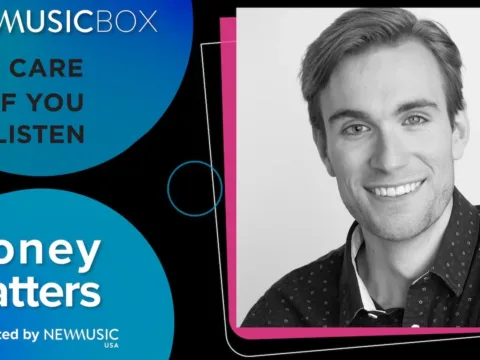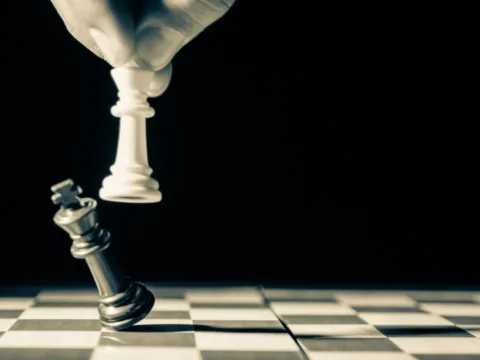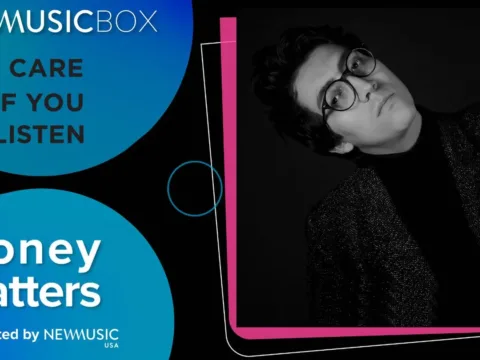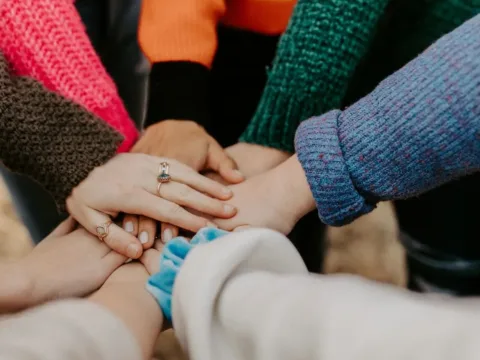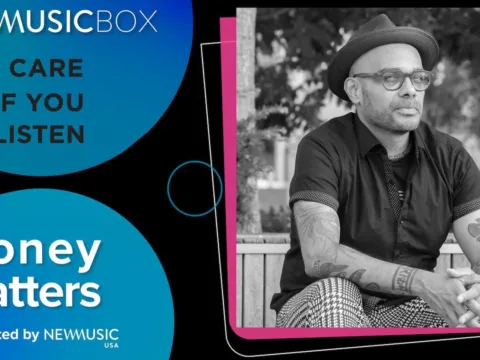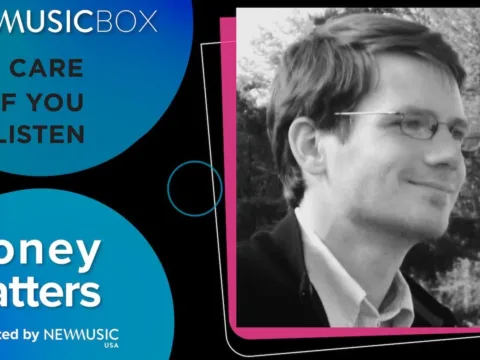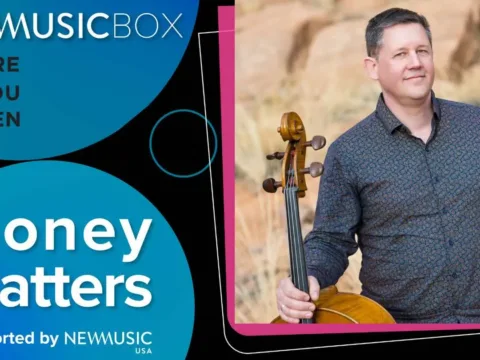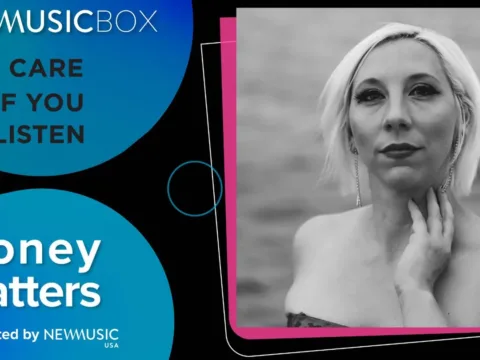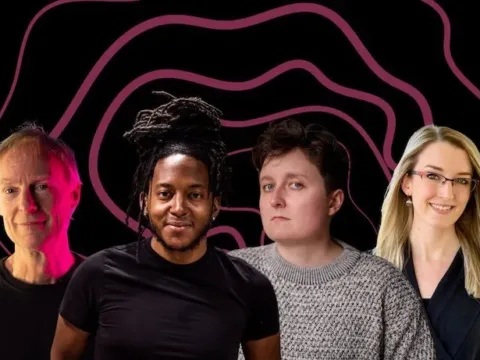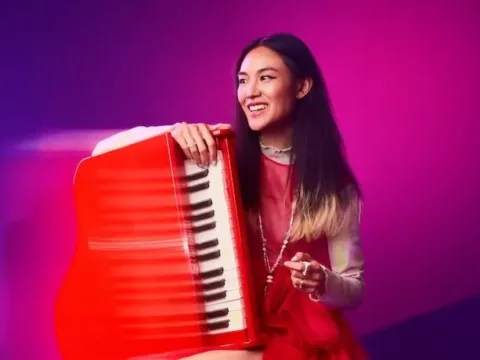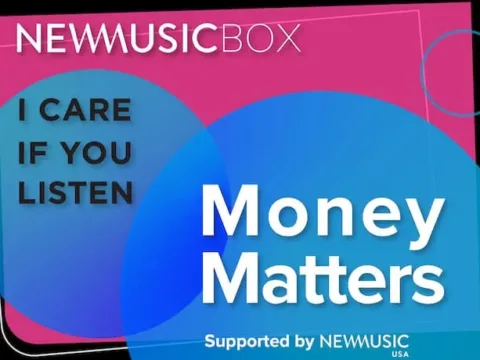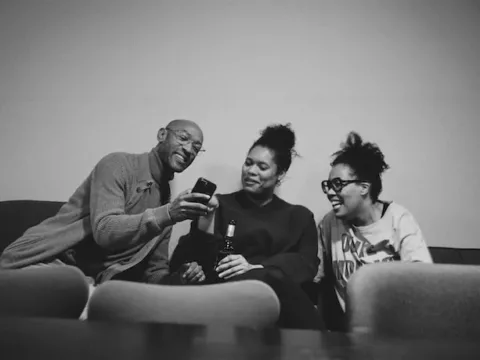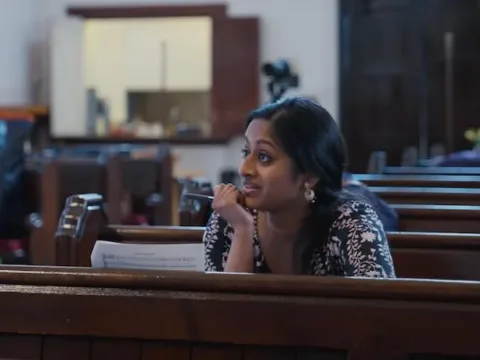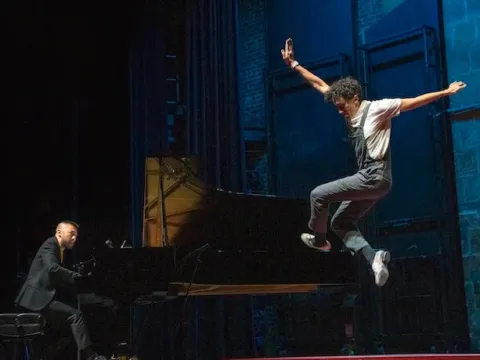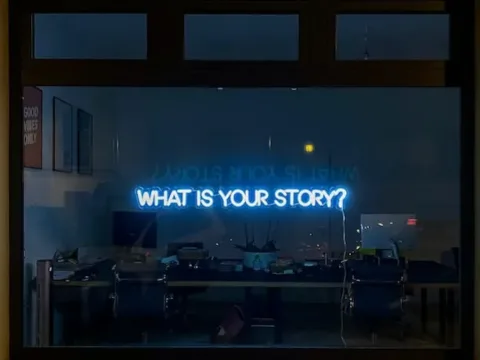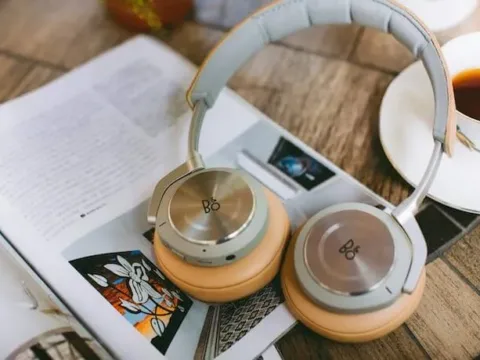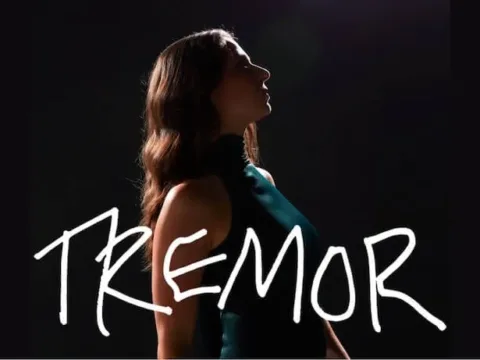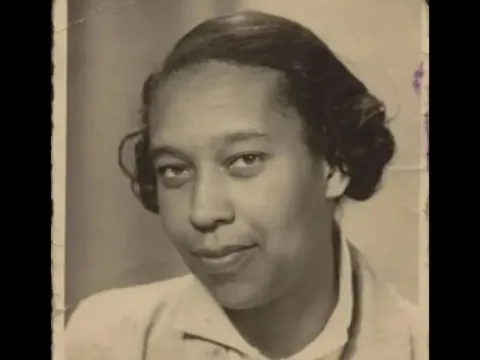Some words from Carolina Heredia, ACF Director of Programs:
The abrupt announcement by MakeMusic to discontinue Finale, a cornerstone in the music notation industry since 1988, marks a significant turning point for many composers who have long relied on this vital tool. For composers, notation software is deeply embedded in the expression of their artistic language, their creative routine, and their professional workflow. The transition to alternative software is not a mere inconvenience; it represents a major disruption that can affect productivity, financial stability, and artistic output. The high costs associated with acquiring new software, undergoing training, and converting extensive libraries of existing works will exacerbate existing inequities in the field.
The lack of outreach and inadequate financial and technical assistance from MakeMusic underscores the need for a more thoughtful response to the profound impact of this decision on its users. We connected with four artists in our community to ask for their advice and guidance navigating this transition.
 From Composer Evan Williams: How to Extend Your Time with Finale
From Composer Evan Williams: How to Extend Your Time with Finale
Sadly, the situation with Finale is a somewhat familiar story for those of us that make electronic music. It’s all too common to lose access or developer support to our favorite plug-ins, externals, software, or even devices.
While the situation is evolving, as of now, MakeMusic has announced that authorization of Finale will continue into the foreseeable future. This means your current version of Finale will continue to work as long as your operating system supports it. A good rule of thumb in these circumstances is to hold off on future macOS and Windows updates until you are sure Finale will be compatible with them. Hopefully, necessary updates that offer security changes or bug fixes will not be an issue. However, the next major OS updates (macOS 15 and Windows 12) will likely break Finale functionality.
To extend your time with Finale further, you may want to investigate virtual machines, docker containers, or even a new dedicated computer. While buying a new Mac or PC can be quite expensive, you can save a great deal of money by investing in a mini PC. They are compact machines, about the size of a streaming box like Apple TV, but they are full-featured PCs. Beelink and GMKtec are two well-reviewed brands, and you can often find these machines for under $200 on Amazon. It’s important that you never install a major software update on this new machine – it will run its current operating system and nothing else during its life cycle.
It would also be wise to limit your use of this machine to only Finale. Web browsing, downloading files, and running a myriad of applications can open this computer up to viruses, or add strain to the processor and memory, shortening its life. While not a guarantee, a mini PC, virtual machine, or docker container could theoretically extend your time with Finale indefinitely, giving you as much time as you need to learn a new software.
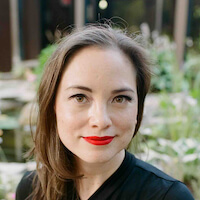 From Composer Jenn(ifer) Jolley: Basic Steps for Transitioning to New Software
From Composer Jenn(ifer) Jolley: Basic Steps for Transitioning to New Software
My head is still spinning about Finale’s discontinuation. As a Sibelius user, this was a huge wake-up call since I quickly realized my .sib files would not last forever. I immediately downloaded Dorico and have been thinking about how to archive my music files as fast as possible.
Ironically, I’ve been in contact with my friend Jessica Grimmer about the importance of digitally archiving my files for posterity. The good news is that the practice of properly archiving your digital notation files can actually make the transition into another notation program smoother than you might expect. Here are some steps.
If you’re attached to an institution, the first thing to do is consult your archivist or librarian. These professionals are well-versed in data management and can provide valuable advice on best practices for archiving your music files.
Next, export all of your scores and all of your parts to those scores into a PDF/A file. These files will remind you what your scores look like before you import them into your new chosen software. Plus, this might be the only step you need to take to preserve your music if you have scores you don’t intend to revise at any point. Remember, you don’t necessarily need to import all your .mus files into a new application.
Now comes the hard part — you must export all of your scores and all of your parts into compressed and uncompressed .xml files. You will ultimately want to have both prepared to see which file type looks closer to your original when transferring your music to a new notation program. This process can be incredibly tedious and time-consuming, as it involves converting each file individually. I’m so sorry. You didn’t deserve this. Fortunately, you can batch export your Finale files to .xml, which can save you some time and effort.
To ensure these files survive the transfer, import your compressed and uncompressed .xml files into Sibelius/Dorico/Musescore. Then, you can restore your files to their former glory, but only after learning your new software from scratch.
And remember, please back up everything. The 3-2-1 Backup Strategy (3 copies of the data on 2 different devices with 1 copy stored in the cloud) is not just a suggestion, it’s a crucial step to ensure the safety and accessibility of your music files.
P.S. Jessica Grimmer needs your help! Please participate in an anonymous survey that explores how you use digital tools in your compositional process, the types of files and software you engage with, and your current practices and knowledge regarding the preservation of your work. Your responses will contribute to the creation of a toolkit designed to support composers in safeguarding their creative outputs for future generations.

 From Composer Stephanie Ann Boyd: “There’s Hope on the Other Side…”
From Composer Stephanie Ann Boyd: “There’s Hope on the Other Side…”
It was my father who sent me the now-infamous Finale sunsetting email; I was so young when I started using Finale that we signed up under my father’s email instead of mine. 19 years of working with this software on a nearly-daily basis, but not 20 – because for the last year, I’ve been using Dorico.
In the beginning, Finale was pure magic to me. My parents had been restrictive on electronics, so when I got Finale at age 15, it was essentially the first (and only) video game I’ve ever played. I brought my computer to school so that I could compose in the cafeteria during lunch, I frequently got in trouble for composing way past my bedtime, and I quickly learned to deal with Finale’s quirks. Circa 2007, Finale hadn’t yet adjusted to be fully compatible with Intel-based Macs. The worst bug was being unable to “control Z” my way out of any mistakes – if I accidentally deleted a whole section of music, it was gone forever!
I often found myself pleading with Finale to work the way I needed it to. A particularly intense period two years ago of zooming in and out of my manuscript to fix collisions in Finale’s placement of dynamics gave me a case of tendonitis so bad that I essentially stopped any typing/Finale-ing for a month to let my wrists heal. It was on a whim one night last July that I downloaded Dorico. And in the very first hours of using it, I felt this big balloon of elation inside me as I realized how many hundreds of hours of editing work Dorico was going to take off my shoulders/off my wrists!
It took about two months of rewiring my brain to Dorico’s completely-different-than-Finale logic structure before I really began to “fly,” and through the pain of growing synapses, I took comfort in the knowledge that some day soon I’d have all these commands as deeply ingrained in my body as Finale’s were. And Dorico continually delights me with the small elegances of its capabilities, slowly rewriting my understanding of how frustration-free the process of working should be, like: the ability to quickly specify which instruments to include in a given playback, being able to edit in real-time during playback, a powerful “condensing” function for orchestral scores, beautiful and quick-to-input ossia functions, “set it and forget it” lists of of layout and engraving options, and being able to split a piece into movements (complete with movement title and correct measure numbers) in just three clicks.
And even though I’m so, so appreciative of everything Finale gave to me in our 19 years together, when people ask me about this issue, I tell them that if I could marry a software, it would be Dorico.
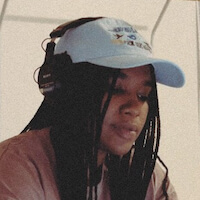 From interdisciplinary artist Yaz Lancaster: Seeking Opportunities to Expand Beyond Musical Notation
From interdisciplinary artist Yaz Lancaster: Seeking Opportunities to Expand Beyond Musical Notation
For artists who rely on Finale for score creation, being forced to switch to a new music notation software is almost unthinkable. Specific softwares are like instruments – each comes with its own logistics, style, and quirks that take time to learn and incorporate into a workflow. Licenses are expensive, whether you’re paying monthly, annually, or perpetually (one time), and those locked into longer deals are now tasked with purchasing a license for a new software, while also slowing down how quickly and effectively they are able to work. It’s clear that MakeMusic did not deeply consider the implications for those whose livelihood is centered in software-created scoring using Finale.
At the same time, I’d like to challenge some existing ideas about scores, and to offer several alternatives to traditional musical notation. In the recent discourse circulating social media, I’ve seen many composers and engravers talk about the impact that switching softwares will have on the precision and cleanliness of their scores. But for many people, the “big three” (Finale, Sibelius, and Dorico) are already inaccessible due to their costs – and I’ve seen people speak ill of free alternatives like MuseScore for years. This already presents a financial barrier to the colonial concept of the “perfect score,” along with having the resources to learn proper engraving techniques and standards. Although it can be true that performers will be better able to execute your ideas if they are presented in the clearest way possible, there exists entire traditions and practices that are successful with non-traditional scores – or without scores at all.
Understandably, there are projects already in motion and deadlines to meet. But moving forward, what if we considered adopting other ways of writing into our compositional practices? Can you communicate your ideas graphically? Can your score be a video, an audio recording, or a text-based prompt? I have learned and performed some of the most rhythmically and harmonically complex music in my artistic career in steel bands, where all music is passed on completely aurally. There are even merits to the handwritten score. While there are very real issues facing Finale users, I also see this moment as an opportunity to expand our artistry, add a couple more tools to our belts, and diversify the ways we conceive of success and “professionalism” in communicating creative ideas – which could pave the way for a collectively accessible praxis and open more doors for more people in our community.
Looking for an engraver who can assist with transferring your files from Finale to Dorico? These folks are available to help:
Kian Ravaei – https://kianravaei.com/index.html
kian@kianravaei.com
Zachary Catron – https://www.zacharycatron.com/
zachary.f.catron@gmail.com
TJ Sclafani – https://www.linkedin.com/in/tj-sclafani-84734643
tjsclafani@gmail.com
David Stevens – https://www.abstractionmusicgroup.com/
abstraction.musicgroup@gmail.com
Dan Neville – https://danvibes.com/
Localfreshvibes@gmail.com
This article is part of ACF’s digital media expansion to empower artists, made possible by funding from the John S. and James L. Knight Foundation. Learn more at kf.org and follow @knightfdn on social media.
I CARE IF YOU LISTEN is an editorially-independent program of the American Composers Forum, and is made possible thanks to generous donor and institutional support. Opinions expressed are solely those of the author and may not represent the views of ICIYL or ACF.
You can support the work of ICIYL with a tax-deductible gift to ACF. For more on ACF, visit the “At ACF” section or composersforum.org.

